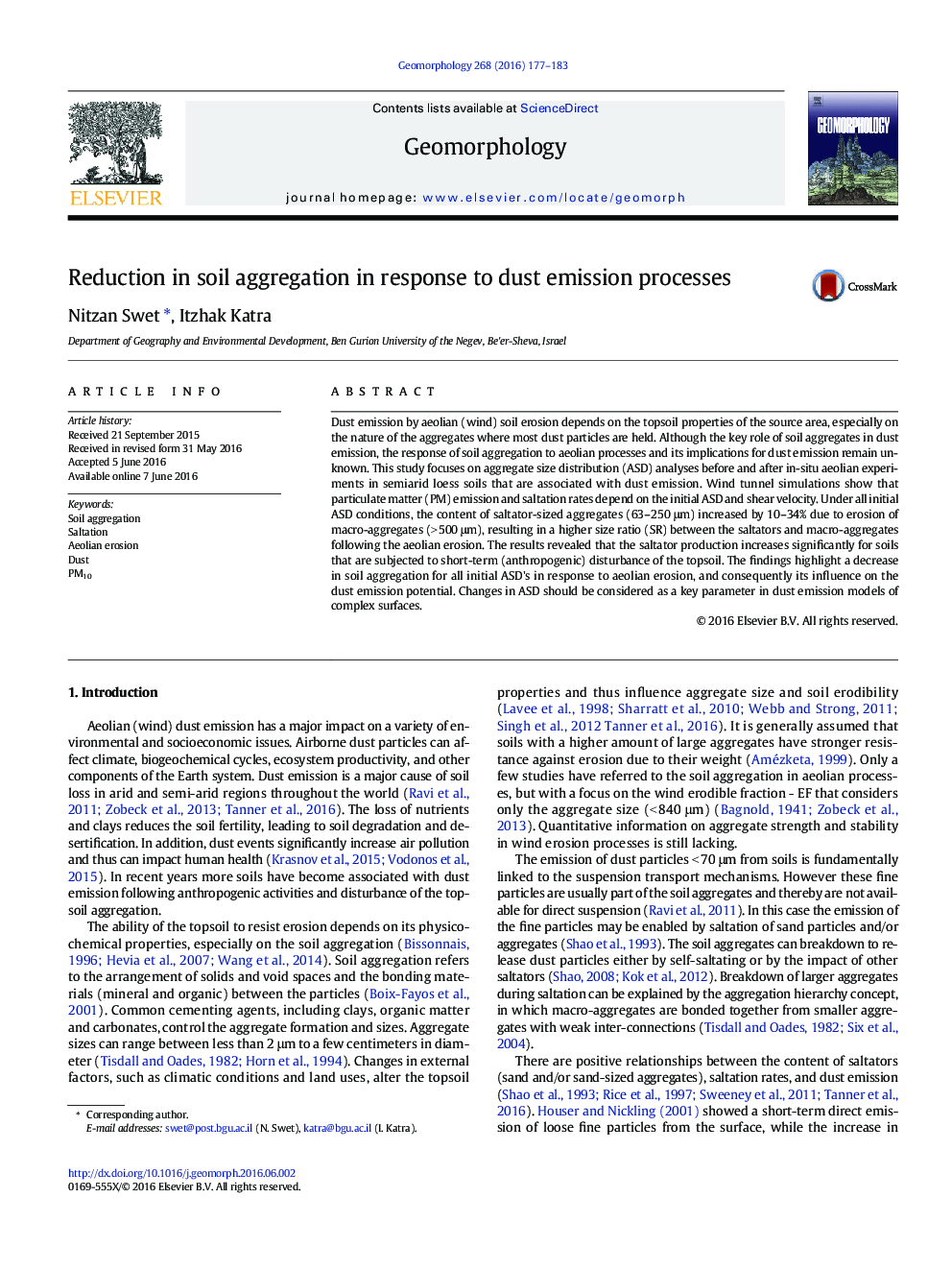| کد مقاله | کد نشریه | سال انتشار | مقاله انگلیسی | نسخه تمام متن |
|---|---|---|---|---|
| 4683971 | 1635381 | 2016 | 7 صفحه PDF | دانلود رایگان |
• A decrease in soil aggregation in response to aeolian erosion.
• Production of saltator-sized aggregates depends on the initial ASD.
• Soil aggregation is as a key factor in dust emission from complex surfaces.
Dust emission by aeolian (wind) soil erosion depends on the topsoil properties of the source area, especially on the nature of the aggregates where most dust particles are held. Although the key role of soil aggregates in dust emission, the response of soil aggregation to aeolian processes and its implications for dust emission remain unknown. This study focuses on aggregate size distribution (ASD) analyses before and after in-situ aeolian experiments in semiarid loess soils that are associated with dust emission. Wind tunnel simulations show that particulate matter (PM) emission and saltation rates depend on the initial ASD and shear velocity. Under all initial ASD conditions, the content of saltator-sized aggregates (63–250 μm) increased by 10–34% due to erosion of macro-aggregates (> 500 μm), resulting in a higher size ratio (SR) between the saltators and macro-aggregates following the aeolian erosion. The results revealed that the saltator production increases significantly for soils that are subjected to short-term (anthropogenic) disturbance of the topsoil. The findings highlight a decrease in soil aggregation for all initial ASD's in response to aeolian erosion, and consequently its influence on the dust emission potential. Changes in ASD should be considered as a key parameter in dust emission models of complex surfaces.
Journal: Geomorphology - Volume 268, 1 September 2016, Pages 177–183
